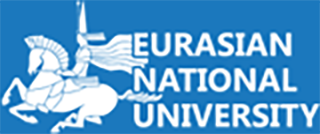Abstract
The Stepnogorsk area Northern Kazakhstan has a long historymining activities. Mining activities have lots of environmental and health impacts. The aims of this study were to characterizing the general radiological situation of the area and evaluate radiation exposure by scenarios in settlements. In this study radiological assessment was performed for critical group living in the territory contaminated with radionuclides; working and studying at school located on territoryformer mining site. The annual dose burden is 2.5 mSv y .1 in Zavodskoy, 1.9 mSv y .1 in Kvartsitka and 3.6 mSv y .1 in Aqsu; and exposure from radon is around 11 mSv y .1 at the ground floor, and for teachers -up to 12 mSv y.1 . At settlements, however, under the hypothesis that all food contaminated with radionuclides and vegetables is cultivated locally in the territories with high background level, exposure from ingestion is 9.1 mSvy .1 in Zavodskoy, 8.3 mSv y .1 in Kvartsitka and 11.5 mSv y .1 in Aqsu. The combined effects of environmental problems have culminated into health problems. There are such possibility of the higher prevalence of cardiovascular, digestive and respiratory systems so it is necessary to evaluate or protect people living in Stepnogorsk area.
Article Type
Original Study
First Page
52
Last Page
63
Creative Commons License

This work is licensed under a Creative Commons Attribution 4.0 International License.
Recommended Citation
Ibrayeva, D. S.; Aumalikova, M. N.; Ilbekova, K. B.; Bakhtin, M. M.; Kazymbet, P. K.; Ibrayeva, Sh. S.; and Zhumadilov, K. Sh.
(2021)
"Assessment of radiation exposure in the settlements located in Stepnogorsk area,"
Eurasian Journal of Physics and Functional Materials: Vol. 5:
No.
1, Article 7.
DOI: https://doi.org/10.32523/ejpfm.2021050107

